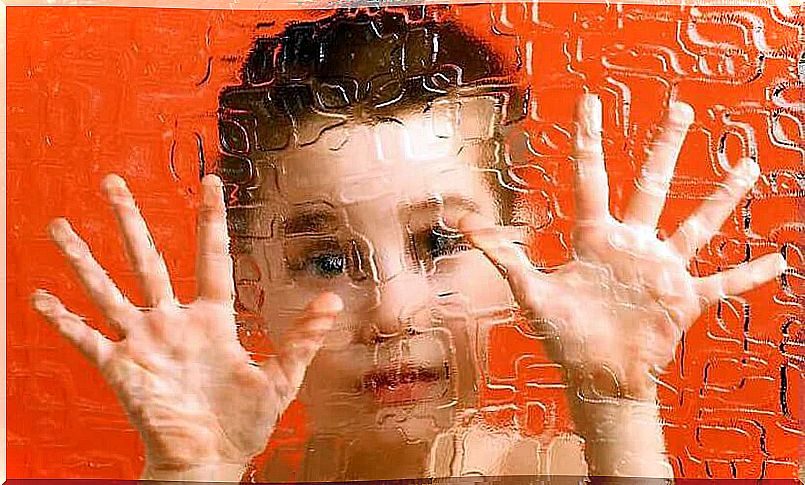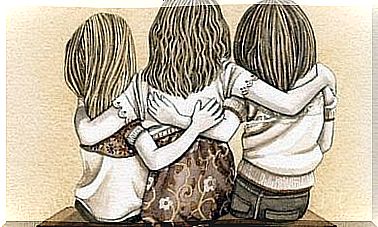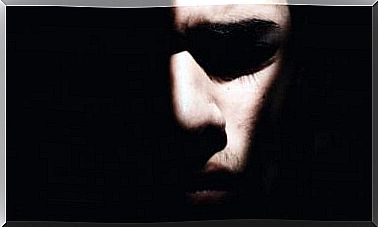Paranoid Schizophrenia: Definition, Causes And Treatment

You have undoubtedly heard more than once someone say of another person that they “were paranoid” or that they “were paranoid”. It is not uncommon for us to use the term “paranoid” to refer to someone who believes that someone is following them, hurting them, making fun of them, or going against them. Academically, however, the terms “paranoid” or “paranoid” represent much more than that. In this article, we’ll introduce you to a subtype of psychosis: paranoid schizophrenia.
Historically, the term “psychotic” has been defined in different ways, none of which has been universally accepted. We understand the term “psychotic” as a person suffering from a specific set of symptoms which can be classified into two broad categories: positive symptoms and negative symptoms. We will see them in detail.
Schizophrenia, a serious mental illness
The DSM-IV-TR (Diagnostic and Statistical Manual of Mental Disorders) defines schizophrenia as an alteration that persists for at least 6 months and includes at least one month of active phase symptoms. These symptoms are: delusions, hallucinations, disorganized language, severely disorganized or catatonic behavior, and negative symptoms.

Positive symptoms appear to reflect an excess or distortion of normal functions, while negative symptoms reflect a decrease or loss of normal functions. Positive symptoms include inferential thinking distortions (commonly referred to as delusions, which includes the “paranoid” ideas discussed earlier). They also include hallucinations, disorganized language and severely disorganized behavior.
For their part, negative symptoms include restrictions in the range and intensity of emotional expression (affective flattening), the fluidity and productivity of thought and language (alogy), and the initiation of a behavior directed towards an objective (abulia).
Delusional ideas
Delusions are mistaken beliefs that usually involve misinterpreting experiences or perceptions. Their content can include various themes (eg persecution, self-reference, somatic, religious or grandiose). The delusions of persecution are the most common.
The person who suffers from delusions of persecution (paranoid or paranoid ideas) believes that he is being disturbed, followed, deceived, spied on or ridiculed. Delusions of self-reference are also common: the person believes that certain gestures, comments, passages from books, newspapers, songs or other elements of his environment are specially dedicated to him.
Although weird delusions are considered typical of schizophrenia, the “weirdness” can be difficult to judge, especially in different cultures. The ‘re delusions are considered strange if they are clearly improbable and incomprehensible and if they derive no common life experiences (for example, think that someone implanting a chip under his skin to “spy” his least facts and gestures).
Another example of a weird delusional idea is the belief that a strange being has stolen internal organs and replaced them with those of another person without leaving any injuries or scars. Generally, delusions that express a loss of control over the mind or body are considered strange.
Delusional beliefs can generate social, marital or professional problems. People with delusional ideas may be able to understand other people’s arguments that their ideas are irrational. However, they themselves are unable to accept it. Many of these people can develop an irritable affect. This irritability can be understood at the same time as a reaction to their delusional beliefs.

Paranoid psychosis or schizophrenia
The diagnosis of a particular schizophrenia subtype is based on the clinical manifestations of the patient. Thus, and according to the DSM-IV-TR, there are different types or subtypes of schizophrenia:
- Paranoid
- Disorganized
- Catatonic
- Undifferentiated
- Residual
As we said before, we are going to focus on Paranoid Schizophrenia in this article.
Features of paranoid-type schizophrenia
The main hallmark of paranoid schizophrenia is the presence of clear delusions or auditory hallucinations. On the other hand, the person does not present deficiencies in his reasoning or his affectivity. Basically, delusions are ideas of persecution, fame, or both, but delusional ideas based on different themes may present themselves (eg, jealousy, religion, somatization).
The delusions in paranoid schizophrenia can be manifold, but they are usually organized around a cohesive theme. It is also usual for the hallucinations to be related to the content of the delusional theme.
Symptoms associated with paranoid schizophrenia
Associated symptoms include anxiety, anger, withdrawal into oneself and a tendency to conflict. The person may present an air of superiority and condescension. She may also exhibit pompous manners, shyness, unnaturalness or extreme vehemence in personal relationships.
Persecutory themes can predispose the person to suicidal behavior, and the combination of delusions of persecution and glory with angry reactions can predispose them to violence (although this may not necessarily be the case, it depends on the individual. ).
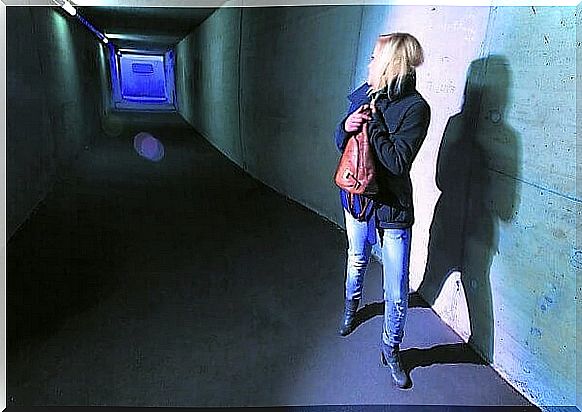
In fact, spontaneous or unexpected attacks are unusual. Aggression is more common in young boys and in individuals with a history of violence, disrespect for treatment, substance abuse and impulsivity. Either way, we have to keep in mind that the majority of people with schizophrenia are not aggressive. They are victims of assault or abuse with a greater frequency than those who are not. More than potential aggressors, they are potential victims.
The onset of psychosis tends to be later than in other types of schizophrenia. Thus, the distinctive characteristics thereof can be more stable over time. There is some information to suggest that the prognosis for the “paranoid” type may be considerably better than for other types of schizophrenia. In general, these people are able to lead a life with a great deal of autonomy.
What are the causes ?
The causes are still not completely clear today and there are still many controversies about them. Either way, risk factors and prognoses have been established. These are the following:
- Environmental factors : date of birth has been linked to the incidence of schizophrenia. For example, late winter / early spring in some areas. The incidence of schizophrenia and related disorders is higher in children growing up in urban areas and in certain ethnic minority groups.
- Genetic factors : There is an important contribution of genetic factors in determining the risk of developing schizophrenia. A wide range of risky, common and rare alleles confers predisposition to the disease. These alleles are associated with other mental disorders, such as bipolar disorder, depression and autism.
- Physiological factors : Complications during pregnancy and childbirth with hypoxia (lack of oxygen), and high paternal age are associated with a higher risk for the developing fetus of suffering from schizophrenia. In addition, other harmful prenatal and perinatal situations, such as stress, infection, malnutrition, maternal diabetes and other medical conditions are also associated with the risk of schizophrenia. However, the vast majority of children with these risk factors do not develop schizophrenia.
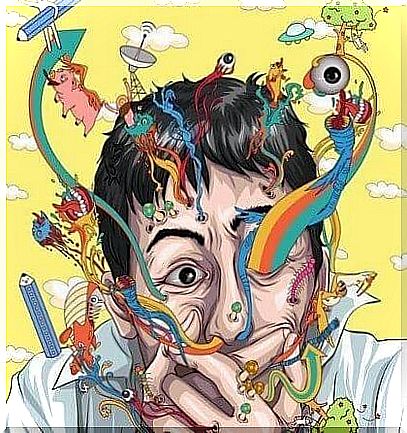
Treatment of paranoid psychosis
Chronic paranoid psychosis is treated with a combination of drugs, mainly neuroleptics, antipsychotics, anxiolytics and support through psychotherapy. On the other hand, the treatment is rarely taken correctly because the patient is not aware of his illness: he feels bad, but he thinks that it is the consequence of what is happening outside him, and not what is going on in his head. Pharmaceutical treatments are taken for life. In severe cases, it is necessary to consider hospitalization.
As we have seen, paranoid-type schizophrenia has characteristics that differentiate it from other schizophrenia subtypes. It is common to have delusions of persecution, fame, or both. Nevertheless, the reasoning capacity remains more or less intact, which allows patients to maintain a high level of autonomy.
Bibliography:
American Psychiatry Association (2014). Manual diagnóstico y estadístico de los trastornos mentales (DSM-5), 5ª Ed. Madrid: Editorial Médica Panamericana.
Chinchilla Moreno A. Las esquizofrenias . Barcelona: Elsevier Masson; 2007.
